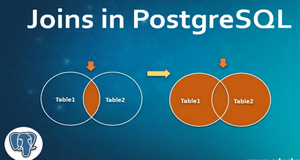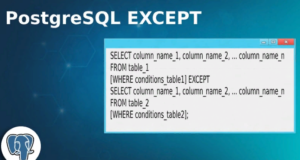PostgreSQL
You will learn how to create, update, and drop VIEWS in PostgreSQL with syntax and examples. What is VIEW in PostgreSQL? In PostgreSQL, VIEW is not a physical table, but rather a virtual table...
PostgreSQL DROP TABLE statement allows you to remove a table from a PostgreSQL database. The simplest syntax for DROP TABLE in PostgreSQL DROP TABLE table_name; The full syntax for the...
PostgreSQL ALTER TABLE statement is used to add, modify, or clear / delete columns in a table. PostgreSQL ALTER TABLE is also used to rename a table. Add a column to a table The syntax for...
PostgreSQL CREATE TABLE AS statement is used to create a table from an existing table by copying columns of an existing table.It is important to note that when...
PostgreSQL CREATE TABLE statement allows you to create and define a table. The easiest syntax for CREATE TABLE statement in PostgreSQL CREATE TABLE table_name ( column1 datatype [ NULL | NOT...
PostgreSQL VACUUM statement is used to restore the storage by removing outdated data or tuples from a PostgreSQL database. The syntax for the VACUUM statement in PostgreSQL VACUUM [FULL]...
The DROP USER statement is used to delete a user from a PostgreSQL database. The syntax for the DROP USER statement in PostgreSQL DROP USER user_name; Options and arguments of the...
The ALTER USER operator is used to change the user password in a PostgreSQL database. The syntax for changing the password with ALTER USER statement in PostgreSQL ALTER USER user_name WITH [...
You can grant GRANT and REVOKE rights for different database objects in PostgreSQL. We will see how to grant and revoke table privileges in PostgreSQL. Grant privileges for a table You can give...
PostgreSQL CREATE USER statement creates a database account, which allows you to log in to a PostgreSQL database. The syntax for CREATE USER statement in PostgreSQL CREATE USER user_name [...
PostgreSQL JOIN is used to extract data from multiple tables. PostgreSQL JOIN is executed whenever two or more tables are combined in an SQL statement.There are different types of PostgreSQL...
The PostgreSQL EXCEPT statement is used to return all lines in the first SELECT statement that are not returned by the second SELECT statement.Each SELECT operator will define the data...
PostgreSQL INTERSECT statement returns the intersection of 2 or more data sets. Each data set is defined by the SELECT operator.If a record exists in both datasets, it will be included in the...
PostgreSQL UNION ALL statement is used to combine the resulting sets of 2 or more SELECT operators. It returns all rows from a query and does not delete repeating rows between different SELECT...
PostgreSQL UNION statement is used to combine the resulting sets of 2 or more SELECT operators. It removes repetitive lines between different SELECT operators.Each SELECT statement in a UNION...
The PostgreSQL DELETE statement is used to remove one or more records from a table in PostgreSQL. DELETE statement syntax in PostgreSQL DELETE FROM tab [WHERE conds]; Parameters and arguments...
















